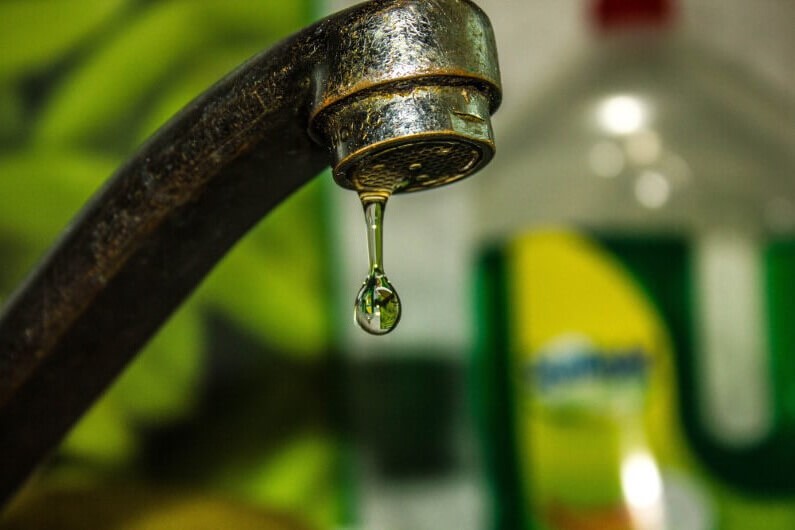What're your opinions with regards to Water Dripping from Faucet: Why and How to Fix?

Dripping faucets might feel like a small aggravation, yet their impact exceeds simply the inconvenience of the audio. From wasting water to incurring unneeded economic costs and health and wellness risks, neglecting a dripping tap can cause different consequences. In this write-up, we'll explore why it's important to address this typical household concern quickly and successfully.
Wastage of Water
Ecological Impact
Leaking faucets contribute dramatically to water waste. According to the Environmental Protection Agency (EPA), a single tap leaking at one drip per secondly can throw away more than 3,000 gallons of water per year. This not just strains water sources but likewise influences communities and wildlife depending on them.
Financial Prices
Raised Water Costs
Past the ecological influence, trickling taps can blow up water costs substantially. The accumulated wastefulness over time translates into greater energy expenditures, which can have been stayed clear of with prompt repairs.
Potential Building Damages
Additionally, prolonged leaking can cause damage to fixtures and surfaces surrounding the tap. Water accumulation can trigger staining, deterioration, and also structural issues if left neglected, leading to additional fixing expenses.
Wellness Issues
Mold And Mildew and Mildew Growth
The consistent presence of dampness from a leaking tap creates an ideal environment for mold and mildew and mold growth. These fungi not only endanger indoor air high quality yet also present health risks, specifically for individuals with respiratory system problems or allergies.
Waterborne Diseases
Stationary water in trickling faucets can become a breeding place for microorganisms and various other pathogens, increasing the risk of waterborne diseases. Pollutants such as Legionella bacteria grow in stationary water, potentially causing serious illnesses when ingested or breathed in.
DIY vs. Professional Repair work
Benefits and drawbacks of Do It Yourself Fixing
While some may try to take care of a dripping tap themselves, do it yourself repair services come with their own collection of challenges. Without correct knowledge and tools, DIY efforts can aggravate the issue or cause insufficient repair work, extending the trouble.
Benefits of Hiring an Expert Plumber
Working with an expert plumber makes certain that the underlying reason for the trickling faucet is dealt with successfully. Plumbing professionals have the proficiency and equipment to diagnose and repair tap concerns efficiently, saving time and decreasing the danger of further damage.
Step-by-Step Guide to Repairing a Dripping Faucet
Devices Needed
Prior to trying to fix a trickling faucet, gather the essential tools, including a flexible wrench, screwdrivers, replacement components (such as washers or cartridges), and plumber's tape.
Usual Faucet Issues and Their Solutions
Identify the kind of tap and the specific problem causing the drip. Common problems consist of worn-out washers, rusty valve seats, or defective O-rings. Refer to supplier directions or online tutorials for detailed advice on repair services.
Preventive Measures
Normal Maintenance Tips
To stop leaking faucets, do routine upkeep such as cleaning aerators, checking for leakages, and replacing damaged components without delay. Furthermore, think about installing water-saving tools or upgrading to more reliable fixtures.
Value of Prompt Repairs
Attending to trickling taps as soon as they're discovered avoids additional water wastefulness and possible damages, ultimately saving both water and money in the long run.
Effect On Residential Or Commercial Property Value
Understanding of Well-Maintained Residential Property
Preserving a residential property in good condition, including attending to upkeep problems like trickling faucets, boosts its viewed value and charm among prospective buyers or lessees.
Influence on Resale Worth
Properties with well-kept plumbing components, consisting of faucets, command higher resale values in the property market. Dealing with trickling faucets can add to a favorable impact throughout residential property assessments and settlements.
Environmental Responsibility
Individual Payment to Preservation
Taking obligation for taking care of dripping taps aligns with wider efforts toward water conservation and environmental sustainability. Every individual's actions jointly make a considerable influence on protecting valuable resources.
Lasting Living Practices
By focusing on punctual repairs and embracing water-saving routines, people contribute to lasting living practices that benefit both existing and future generations.
Verdict
Addressing a leaking tap surpasses simple comfort; it's a necessary action towards preserving water, lowering economic expenses, and securing wellness and home. Whether through DIY repair services or specialist help, doing something about it to take care of leaking faucets is a small yet impactful means to promote responsible stewardship of sources and add to a much healthier, much more lasting future.
How to Fix a Dripping or Leaky Faucet
A leaking faucet is one of the most common problems that homeowners encounter, but it being commonplace doesn’t make it any less annoying. The constant drip drip drip of a leaking bathtub faucet, showerhead, or sink tap can disturb your home’s serenity. Left neglected, a dripping faucet can also result in higher water bills and discoloration or mold growth in your sink or plumbing fixtures.
Fortunately, you don’t have to be a trained plumber to know how to stop a dripping faucet. With some basic tools, replacement parts, and a little patience, leaky faucet repair is a breeze. In this article, we’ll explain what causes dripping faucets and how you can fix them.
What Causes a Leaking Faucet?
Kitchen and bathroom faucets come in all manner of designs, but most involve some combination of valves, O-rings, seals, and washers. The O-ring is usually the weakest link, but any one of these pieces can wear down over time. Heat, moisture, temperature fluctuations, minerals, mold, and movement can contribute to warping and corrosion, breaking the watertight seal. This just comes with the territory of being a homeowner. Everything is always subject to wear and tear, and some component parts of your appliances and fixtures need to be replaced on occasion. At least replacement O-rings are cheap!
More rarely, dripping faucets can be a symptom of excessively high water pressure. Were this the case in your home, you would probably notice that the leak is not isolated to one faucet. Water pressure issues are harder to resolve on your own. We recommend contacting a professional plumber if you suspect your water pressure is too high.
How to Fix a Dripping Faucet
Pipe wrench or monkey wrench Allen wrench set Screwdrivers Old towel or rag Shut off the water.
Before you do anything, you need to turn off the water to keep from drenching your kitchen or bathroom. You should find a valve under the sink and against the wall. Once you’ve turned this valve, try turning the faucet on to confirm that the water source has been cut off.
If you can’t locate your local valve for the faucet you’re working on, you can always shut off the water to the house at the main valve. Of course, this will prohibit anyone from using the sinks, showers, or toilets while you’re working on the faucet that’s giving you trouble.
Plug or block the drain.
You’ll be disassembling the faucet and removing some small bits of hardware. Plug the drain with a stopper or rag to avoid the possibility of a small screw falling into your P-trap.
Take apart the faucet assembly.
There are several varieties of kitchen and bathroom faucets, each with its own manner of assembly. For detailed instructions on how to disassemble your faucet, you can refer to the fixture’s manual or contact the manufacturer. If you know whether you have a ball, disc, cartridge, or compression faucet, you can find detailed schematics online.
In general, you need to begin by removing the faucet handles. You might notice a small screw that you’ll need to remove with a screwdriver or Allen wrench. If you don’t see any visible securing hardware, it’s likely hidden under a decorative cap that can be unscrewed or popped off with flathead screwdriver.
Remove each piece methodically, consulting a schematic when necessary. Take notes or arrange the pieces in such a way to make it easier to correctly reassemble the faucet later.
Remove the cartridge.
Once you’ve removed the handles and securing hardware, you should be able to remove the valve cartridge or stem. Some cartridges will slide right out. Other faucet models will require you to loosen a nut with a pipe wrench before you can remove the valve stem.
Examine the exposed hardware.
With the cartridge or stem removed, inspect the component parts. Check the rubber O-rings for wear and tear. Also examine the seat washer for corrosion or other damage. These pieces are usually the responsible parties for a dripping faucet, but it’s worth inspecting the other component parts while you have the faucet disassembled.
Find replacement parts.
Once you’ve identified which faucet component has failed, find an identical replacement. Your local hardware store should have O-rings, seat washers, and other standard components in stock. If you have a luxury or uncommon faucet, you may have to contact the manufacturer for a replacement part.
It’s a good idea to take your old parts with you to the hardware store so you can compare them with the store’s inventory and be sure you’re purchasing the correct replacement.
Reassemble the faucet.
With your new parts in hand, reconstruct the faucet and handles. Don’t be tempted to overtighten screws or nuts. You might think this could create a better seal, but it can instead damage or bend a delicate part of the assembly and create a new problem for you.
Turn on the water and test the faucet.
The only thing left to do is test your work. Unplug the sink, turn the water back on, and try the faucet. Congratulate yourself on a job well done!
https://www.libertyhomeguard.com/how-to-fix-a-dripping-or-leaky-faucet/

We are very occupied with Why It's Important to Fix Leaky Faucets and I'm hoping you enjoyed the entire post. For those who enjoyed reading our post if you please don't forget to share it. Thanks for your time spent reading it.
 Jennifer Grey Then & Now!
Jennifer Grey Then & Now! Rick Moranis Then & Now!
Rick Moranis Then & Now! Michael J. Fox Then & Now!
Michael J. Fox Then & Now! James Van Der Beek Then & Now!
James Van Der Beek Then & Now! Rossy de Palma Then & Now!
Rossy de Palma Then & Now!